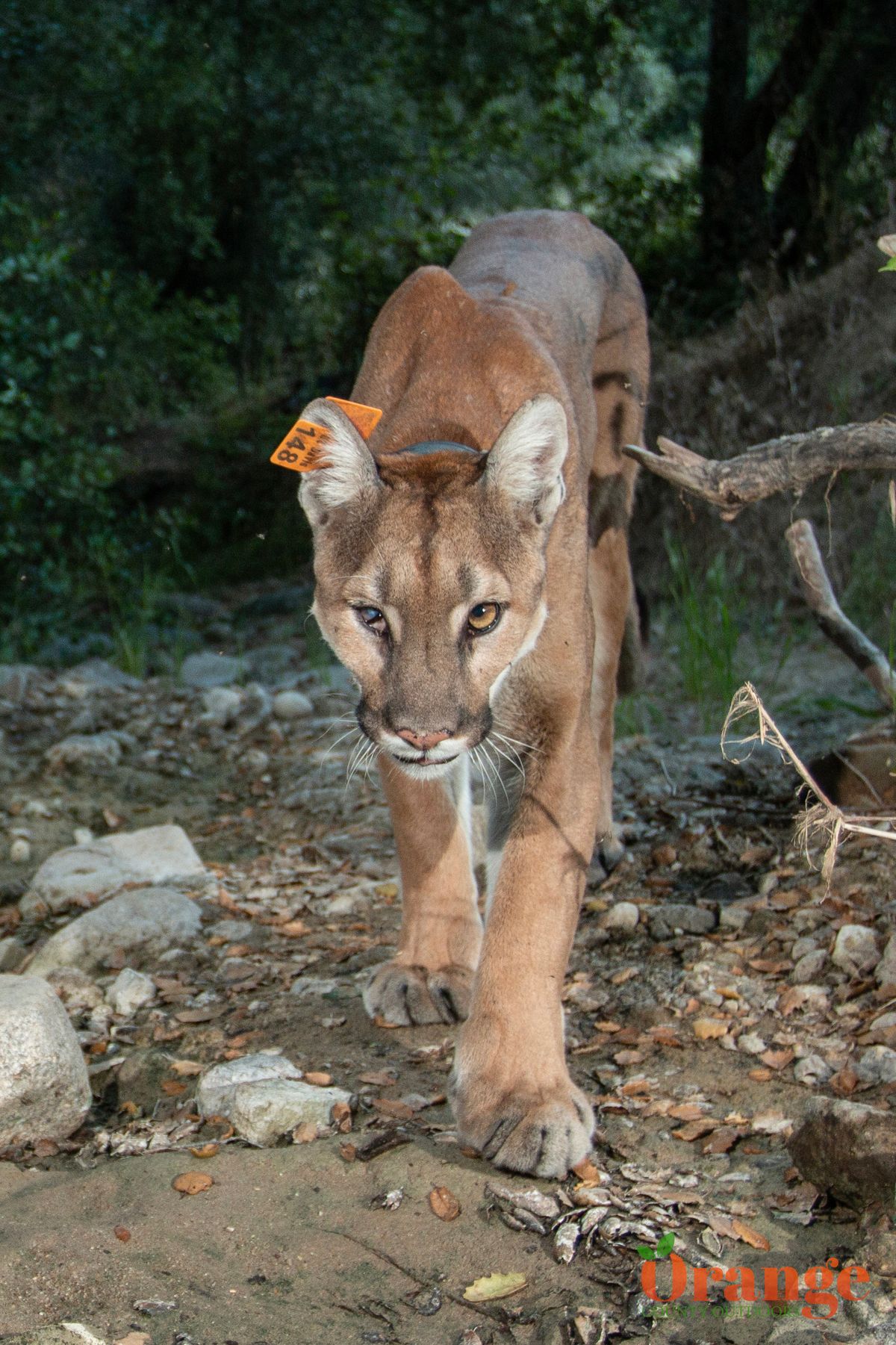The mountain lions of Orange County face an uncertain future as human development encroaches onto their habitat more and more every year. This population is isolated to the Santa Ana Mountains and therefore have a lack of DNA diversity which is also a threat to the future of these animals. Biologists with UC Davis estimate the population of mountains in Orange County at somewhere between 15-25 individuals. While there are several mountain lions that roam Orange County and are not documented, this list features the most well known mountain lions in the Santa Ana Mountains.
The mountain lions of Orange County
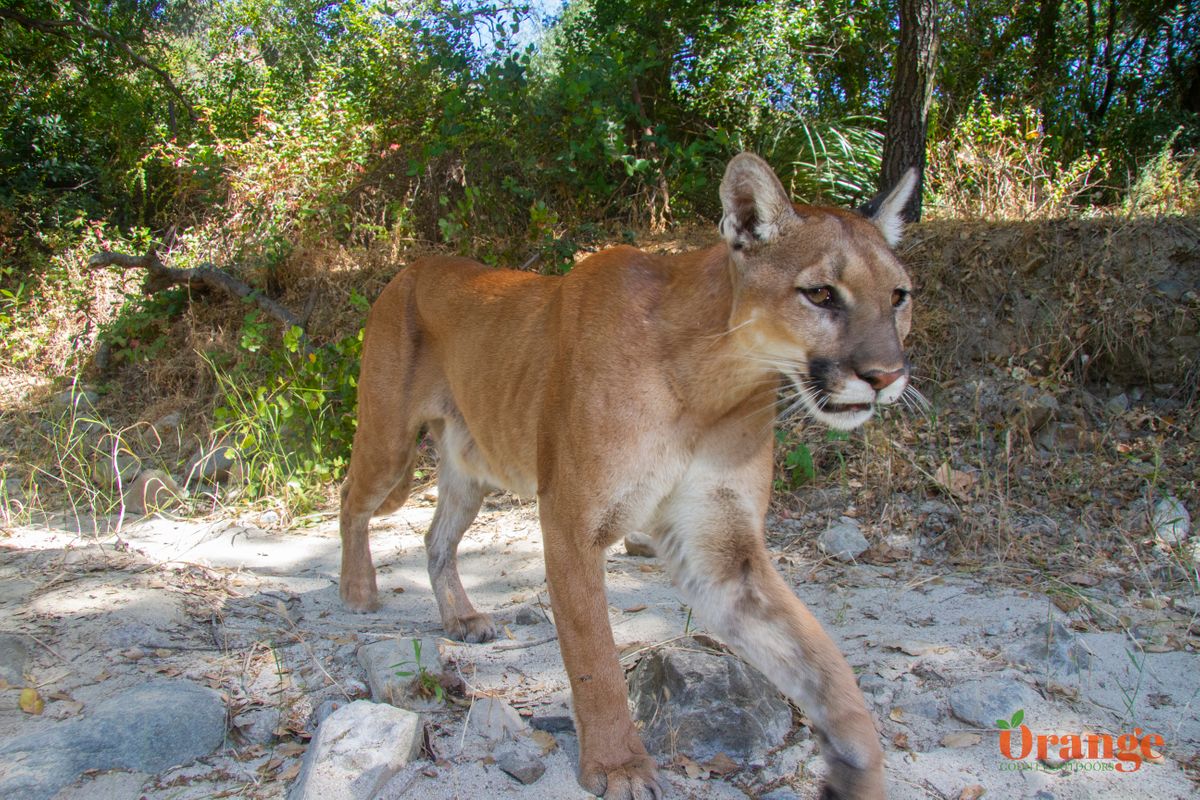
Forest
Born: 2023
Weight: 80 pounds (approx.)
Gender: Female
This young female became locally famous when she showed up in a parking garage at Comfort Inn in Lake Forest next the the 5 freeway. After that, she was seen on some security cameras in a few residences over the next 1-2 weeks. After that she was not seen for a few weeks and it was unknown what happened to her until she started showing up on trail cameras back in the Santa Ana Mountains with the same noticeable identifiers on her. She seems to have fit in nicely now in the wild and is doing well.
Toro
Born: 2018 (approx.)
Weight: 150 lbs. (approx.)
Gender: Male
Research ID: M313
This male has a large territory and dominates his turf. He is mostly nocturnal and is very rarely seen by humans. He can be identified by his large size and no ear tag or collar. He was collared but biologists remotely released the collar due to his growing size and his ear tag fell off.
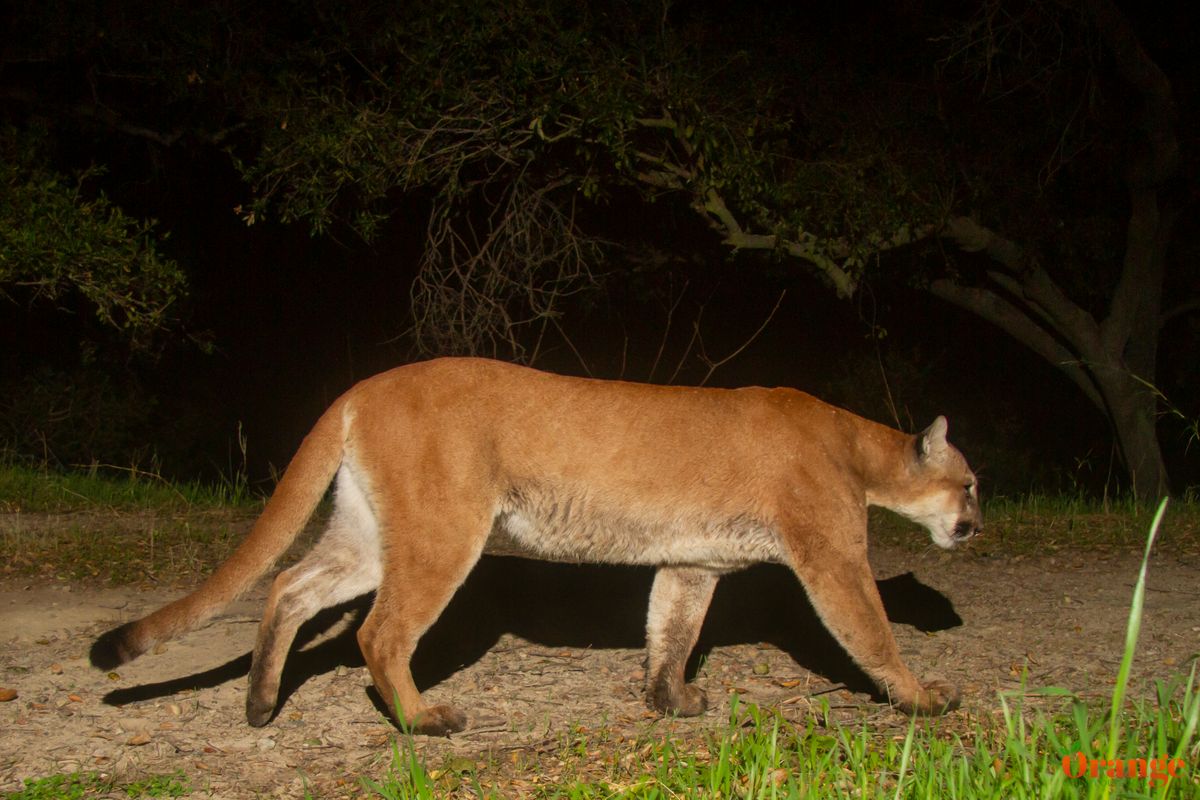
Photo by Mark Girardeau
Bruno
Born: Unknown
Weight: 150 lbs. (approx.)
Gender: Male
Research ID: M316
A large male that mostly roams Orange County and into Riverside County, slightly overlapping territories with Uno and Toro. Bruno is strictly nocturnal and is never seen by humans except by biologists that have captured and collared him. Due to his increasing size, his collar was remotely released and hasn't been put back on. He can be identified by his large size and yellow tag in his left ear. He does not have any prominent markings or scars.
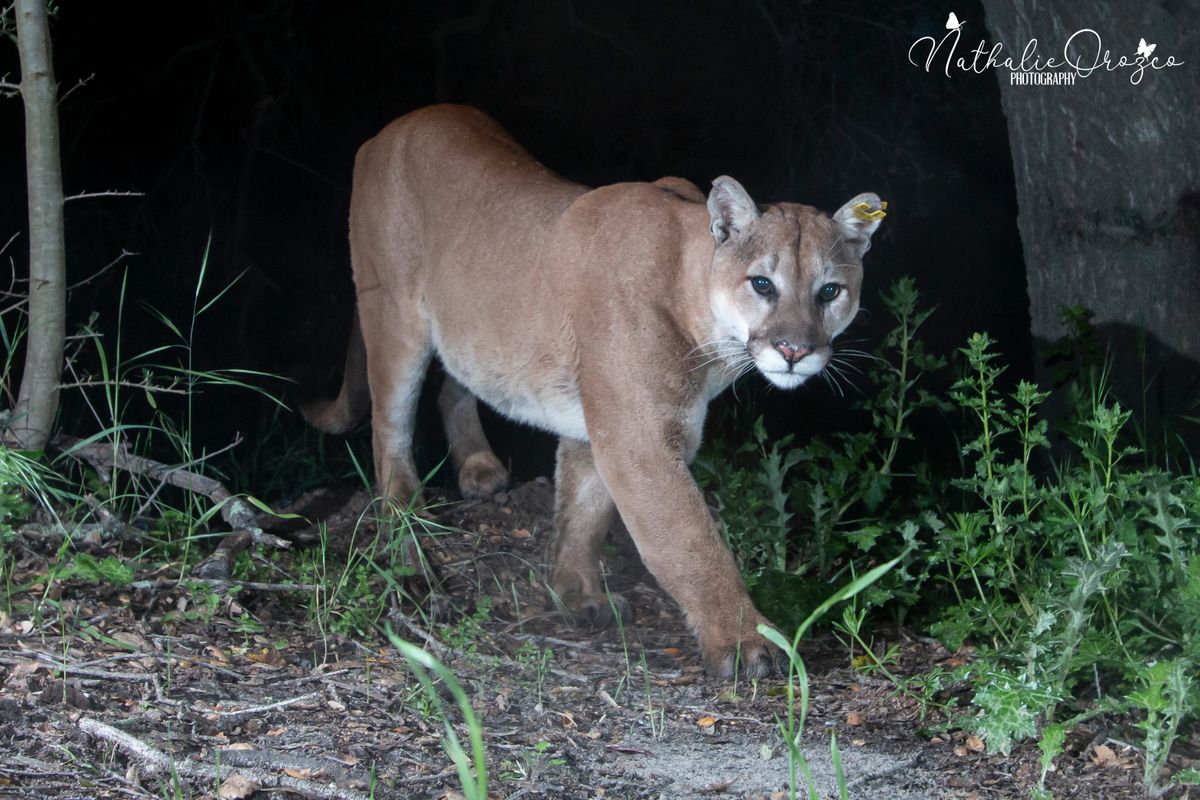
Photo by Nathalie Orozco
Honey
Born: Unknown
Weight: Unknown
Gender: Female
Research: F320
This mountain lion is rarely documented on camera, she seems to stay out of creek beds and dirt roads/trails. Her range is unknown but biologists think she's related to Uno and they have been seen together. It's possible that Honey is the mother of Uno but unconfirmed. She was named due to being documented near bee boxes several times (coincidentally) and she doesn't seem to have much markings or scars on her to name her with.
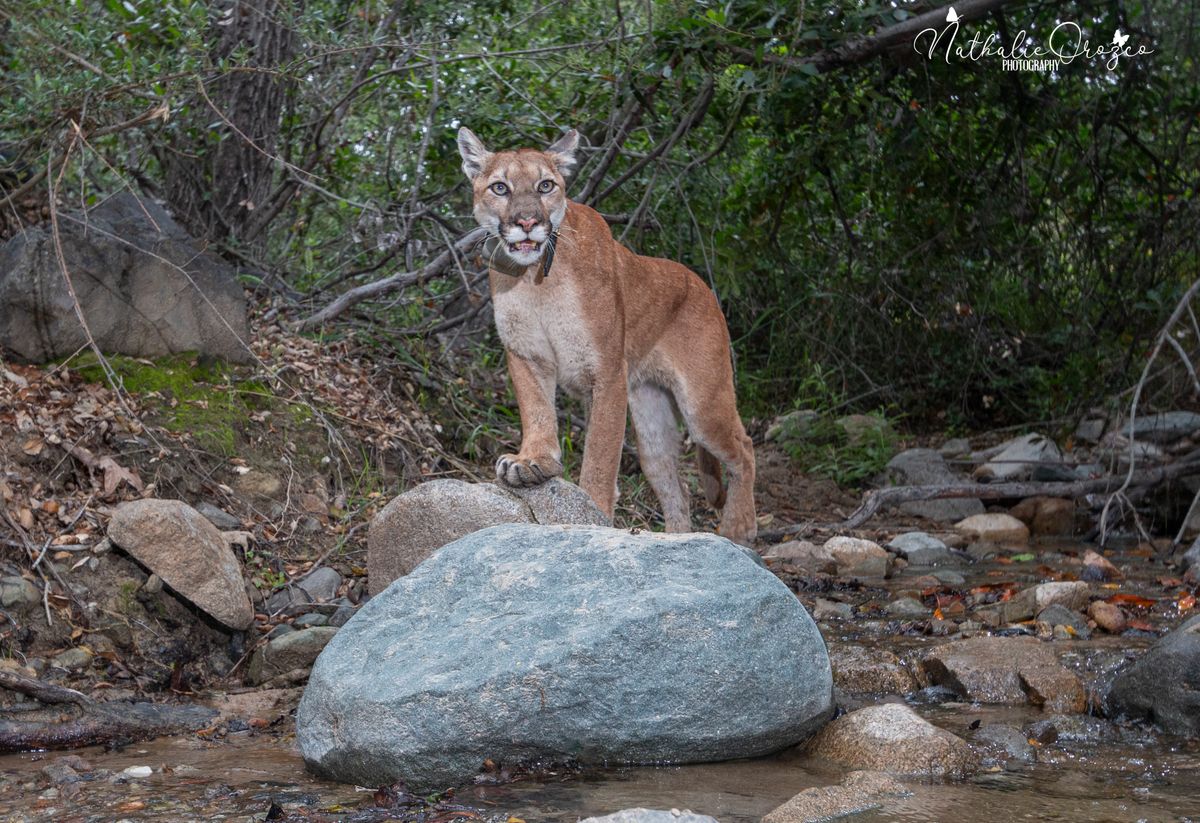
Photo by Nathalie Orozco
Newport
Born: 2020 (approx.)
Weight: 150 (approx.)
Gender: Male
Research ID: M317
Quite the attention getter, this young male ventured out in search of establishing his own territory after leaving his mother but everywhere he went was already territory claimed by other males. He left the Santa Ana Mountains and made his way into Mission Viejo and Irvine, he was even captured swimming across Mission Viejo Lake. He somehow made his way into Laguna Beach and became the first confirmed mountain lion to be documented in the Laguna area in at least 40 years. Because the wilderness surrounding Laguna Beach is so small, this mountain lion was seen many times by humans and captured on surveillance cameras many times. It was already expected that he wouldn't last long in this area before needing to be relocated or hit by a vehicle. Sure enough, after a couple of weeks exploring this area, he showed up at an elementary school in Newport Beach and was captured in someones backyard nearby soon after where he was hiding. He was relocated back into the Santa Ana Mountains.
He has been getting larger and is becoming a good size to compete for territory now with other males. He still seems to roam a huge area and does not have a territory for now. He is strictly nocturnal.

El Cobre (Deceased)
Born: Unknown
Weight: 160 lbs (approx.)
Gender: Male
Also known as "Scar" by a few people due to his very noticeable scarring in his more recent years, El Cobre ("Copper" in Spanish) got himself into trouble in the last years of his life. He was a large male that would prey upon domestic animals that were left unsecured by irresponsible people living amongst wilderness areas. Mountain lions are opportunistic and will adapt and prey on what's available as it takes a lot of energy to take catch deer and other wild animals. Mountain lions don't understand our ways of life and will take advantage of domestic animals that are placed in mountain lion territory and left unsecured. El Cobre found himself stuck in enclosures of goats, several times. Enclosures that were not properly secured together allowed for animals on top of the fencing to slide in but not get back out. He was relocated to different areas of the Santa Ana Mountains but would find his way back each time (as expected). There were a few properties this was happening at and they all kept failing to secure their animals, therefore teaching El Cobre to be dependent on these animals. One day, someone shot him near Ortega Hwy and no proper investigation was ever performed to determine who the culprit was.

Uno (Deaceased)
Born: 2018 (approx.)
Weight: 120 lbs. (approx.)
Gender: Female
Research ID: F320
Easily the most famous mountain lion in California, after the unfortunate passing of P22 in Hollywood. Uno is known for an eye injury that causes her right eye to not reflect against infrared cameras at night. Biologists say that she can still see out of both eyes but the right eye is likely blurry. Uno tends to spend time near human development and is often out during daylight, therefore she is the most frequently seen mountain lion by humans in Orange County. It's likely that she does this for safety reasons although it does put her life at risk spending time around humans and crossing roads.
Uno was named due to only 1 eye glowing from infrared cameras. It's unknown what caused her eye injury but it's likely from a fight with another mountain lion or it got jabbed by a branch/stick. Despite this injury, she thrives and it doesn't seem to affect her.
In Spring of 2022, Uno had 4 kittens which is a lot for a mountain lion, this was her first litter. Unfortunately, none of her kittens survived the year. The first kitten was sick and showed up in someones yard, medical experts rescued the kitten and tried to save her but she passed soon after. Two kittens were struck be vehicles in two separate instances. The fourth kitten disappeared after it was around 6 months old, it's unknown what happened to this kitten but likely was killed but another mountain lion. The suspected father of these kittens was "Toro." Toro and Uno's territories overlap but so does Bruno's.
Biologists with UC Davis have assigned her the ID "F312" recently and are documenting her whereabouts in order to protect her and help with her safe travels.
